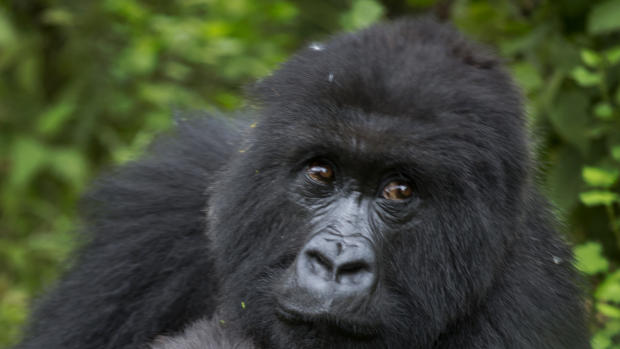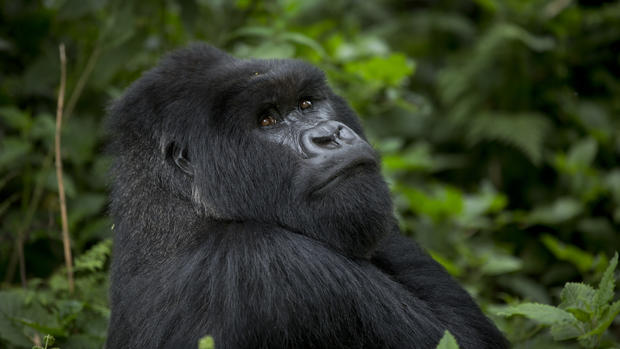Boy's family makes statement on response to gorilla's death
The family of a boy who fell into a gorilla enclosure at the Cincinnati Zoo discouraged supporters from giving them money and instead directed potential donors to give to the zoo.
The unidentified family released its latest statement Wednesday morning. On Saturday, the 3-year-old boy fell into the enclosure and was dragged around its moat by the 17-year-old western lowland gorilla named Harambe. The zoo fatally shot the gorilla to rescue the boy.
The family said the boy is "still doing well" after his latest checkup.
"We continue to praise God for His grace and mercy, and to be thankful to the Cincinnati Zoo for their actions taken to protect our child," the family said.
The family also expressed gratitude for the support they've received since Saturday.
"Some have offered money to the family, which we do not want and will not accept," the family said. "If anyone wishes to make a gift, we recommend a donation to the Cincinnati Zoo in Harambe's name."
CBS News has learned the child's mother has received death threats.
Kara Carrero, author and host of the podcast "Extremely Good Parenting," wrote an open letter on her blog to "extend an invitation of mercy" to the mother. That child should never have been able to breach an enclosure meant to keep a 400-pound gorilla from humans, Carrero wrote.
"I also know that as a mother of two and now almost 3 kids, they can slip away in a single instant. They dart between clothing racks, climb to the tops of trees, and seemingly disappear even when we're trying to pay attention and juggle life in general," she wrote. "It's easy to point fingers from behind a keyboard. It's easy to attack you because the mob mentality is that someone must pay and someone must be to blame. And it's easy to forget that, again, you are not the only party involved."
The Cincinnati Zoo has an open viewing area that was among the first of its kind and is now common in many zoos around the country.
The exhibit was at the forefront of zoos moving away from cages in favor of more realistic living environments and adopting a range of exhibits, from natural habitats behind glass walls to jungle-like settings separated from the public by hedges and bamboo fences.
While police in Cincinnati are investigating the child's parents and federal inspectors plan their own review, the zoo says it will look at whether it needs to reinforce the barriers even though it considers the enclosure more secure than what's required.
"The exhibit is safe, the barrier is safe," said zoo director Thane Maynard, who noted the exhibit is routinely checked by federal inspectors and the Association of Zoos and Aquariums, which also plans to investigate what happened.
The breach, the zoo director said, was the first time a visitor had entered the zoo's Gorilla World, which opened in 1978 and was billed as the first "bar-less" outdoor gorilla habitat in the nation.
A federal inspection less than two months ago found no problems with the gorilla exhibit, but earlier inspections reported issues including the potential danger to the public from a March incident involving wandering polar bears inside a behind-the-scenes service hallway.
Police said the investigation will look at the parents' actions - not the operation of the zoo, which is overseen by the U.S. Department of Agriculture. Police then would discuss with prosecutors whether charges should be filed.
A child endangering charge would be difficult to prove, several legal experts said. Such a charge is typically reserved for parents leaving children unattended for long periods or trapped in hot cars.
"The mother was standing next to a zoo exhibit and lost track of her child for perhaps a minute or so," Ohio State University law professor Ric Simons said. "That has happened to almost every parent in the world in a public place."
At least two animal rights groups were holding the zoo responsible for the death of the gorilla, charging that the barrier made up of a fence, bushes and a moat wasn't adequate.
Most gorilla exhibits around the country now have open-viewing areas - often protected by a combination of glass walls, mesh netting and moats.
- Zoo Atlanta, which boasts the nation's largest gorilla collection, has several outdoor viewing spots that are designed to give visitors the feeling of being very close, but they are still separated by a series of safety barriers.
- Gorillas at the Columbus Zoo are in two enclosed areas behind glass and mesh. The approach is an exception to the type of open enclosure in Cincinnati, which is the industry standard, said spokeswoman Patty Peters.
- The Smithsonian's National Zoo in Washington has an indoor area with glass walls and an outdoor habitat surrounded by barriers made from a combination of glass panes, metal and metal frames filled in with mesh. Metal railings and large planters also stand between the viewing area.
Child safety expert Kimberlee Mitchell, who runs a childproofing business in southern California called Boo Boo Busters, said attractions need to be made as safe as possible because many people drop their guard at an amusement park or zoo.
But even an attentive parent can be distracted, she said.
"It's unthinkable that a zoo exhibit would be created in such a way that a little 3-year-old boy could climb in," she said. "He shouldn't be able to get in there even with his mom's head turned."


